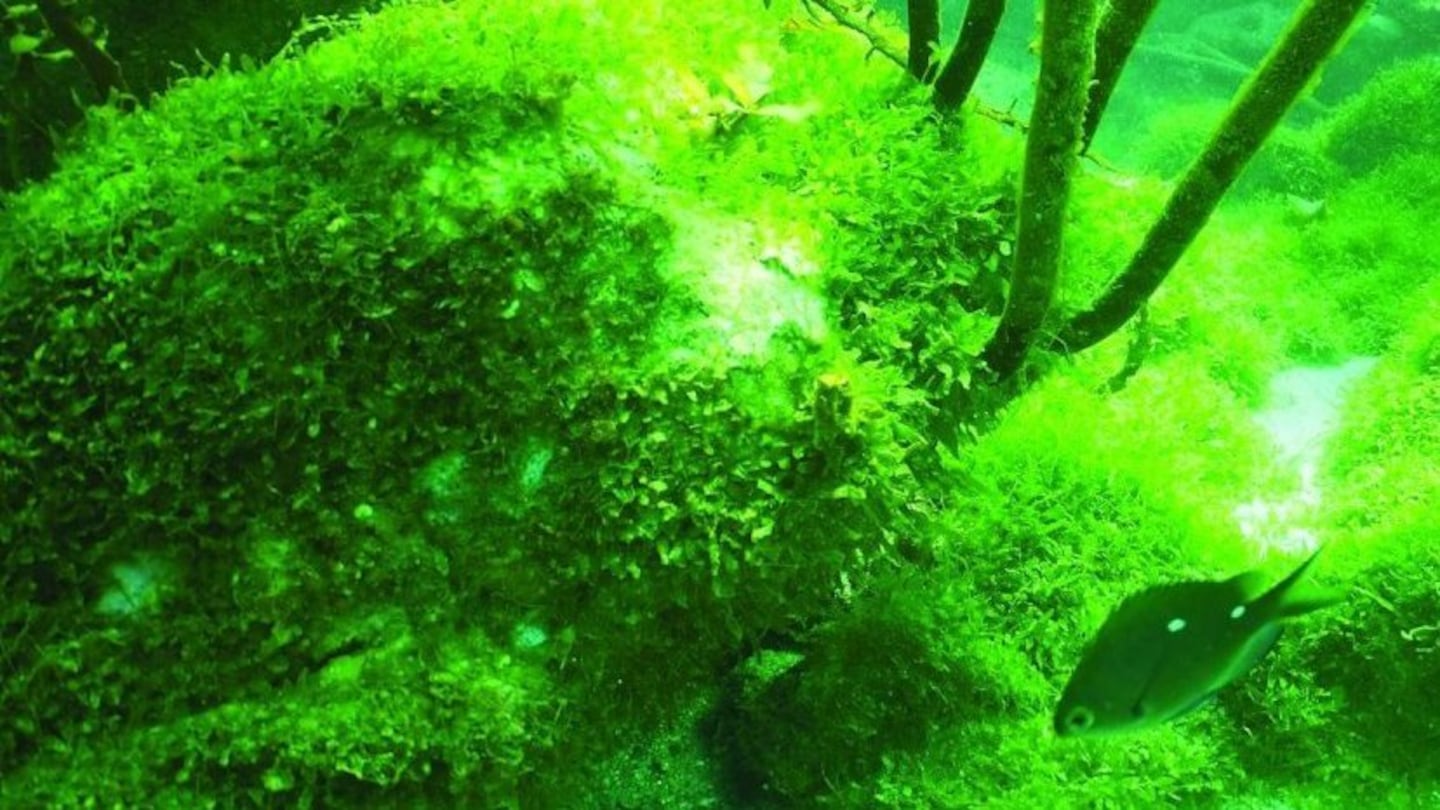Bright green invasive Caulerpa seaweed smothering the delicate marine ecosystem at Great Barrier Island. Now the race is on to prevent it from spreading at Kawau Bay. Photo / Glenn Edney
A north Auckland iwi is taking immediate action to stop one of the most invasive seaweeds spreading through waters in its rohe.
Caulerpa brachypus is a seaweed that forms dense mats smothering the seafloor, affecting shellfish beds and native seagrasses and destroying the diversity of precious marine fauna in the sea.
The Ngāti Manuhiri Settlement Trust is attempting to prevent it from spreading through Kawau Bay.
Trust chief executive Nicola MacDonald says the threat of Caulerpa is incredibly serious.
“As kaitiaki of our whenua and moana, it is our duty to protect and preserve our marine ecosystem. We cannot afford to mess around” she says.
“Caulerpa is easy to spread and very hard to remove. Just a small piece of seaweed caught up in lobster traps, anchors, or diving equipment can be transferred to other areas and risk our ecosystem.”
Caulerpa is a persistent, rapidly growing plant that can survive out of water in moist conditions for up to 10 days. Everyone needs to do their part to ensure it doesn’t take hold, MacDonald says.
Keep equipment clean and clear
“People must be careful about their equipment, keep it clean and not do anything that poses further risk to our waters.”
Ngāti Manuhiri Settlement Trust and the Ministry for Primary Industries, with NIWA, are working together to contain and remove patches of Caulerpa.
Biosecurity NZ response services director John Walsh says his agency is considering using chlorine pellets beneath tarpaulins, as is being tested in the Bay of Islands by Northland Regional Council, or suction dredging to remove the 20cm-30cm patch of seaweed found in the North Channel near Kawau island.
"Finding exotic Caulerpa in another area of Tāmaki is disappointing but not unexpected given the nature of the seaweed.
"Caulerpa can easily be spread to new locations as it’s commonly caught up as tiny pieces of seaweed on vessel anchors and fishing gear," Walsh said.
The discovery is the latest in a series of discoveries across the upper North Island in recent years. A large infestation was first discovered at Blind Bay, Aotea Great Barrier in 2021 and proved extremely difficult to eradicate. More has been detected at Ahuahu Great Mercury and Te Rāwhiti inlet in the Bay of Islands.
Rāhui not ruled out
Ngāti Manuhiri kaitiaki will be involved in the process to ensure māramatanga Māori is utilised and protected.
If necessary, a rāhui will be considered to allow the waters to restore what has been lost.
“A rāhui is not laid down to take anything away from people,” says MacDonald. “It is there to allow our delicate ecosystem to heal and ensure it will be thee for all of us to use in the future.”
“It is important that mātauranga māori is respected, and we’ve made it clear to the officials that this approach must be prioritised as we work to clear Caulerpa from our waters.”
Eradication is a future goal but the immediate focus is on removal and containment. Examination of current resources, expertise, and funding available will be undertaken to ensure this can be done. MacDonald says that long term, consideration must also be given to the Crown’s responsibility for biosecurity and its investment in this kaupapa.
Ngāti Manuhiri Settlement Trust is calling upon all community members, stakeholders, and fellow iwi to join the cause. The public is urged to share information, report sightings and actively participate in eradication efforts to protect the marine environment and pass on a thriving marine ecosystem to future generations.



